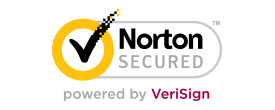The Mortgage Approval Process Made Easy Part 1
 The mortgage approval process doesn’t have to be a grand mystery, in fact, these days it can be quite straightforward. But that doesn’t stop people from being scared off by scary words like origination fees, amortization, or a Ninja loan. Yes, that is a real thing. A Ninja loan refers to “No Income, No Job, No Assets”. These types of loans have become quite a bit less prevalent post-2008 mortgage crisis. Whatever your experience level might be with loans, lenders, or the mortgage process as a whole, after reading this series, you will feel confident enough to tackle this undertaking with enthusiasm.
The mortgage approval process doesn’t have to be a grand mystery, in fact, these days it can be quite straightforward. But that doesn’t stop people from being scared off by scary words like origination fees, amortization, or a Ninja loan. Yes, that is a real thing. A Ninja loan refers to “No Income, No Job, No Assets”. These types of loans have become quite a bit less prevalent post-2008 mortgage crisis. Whatever your experience level might be with loans, lenders, or the mortgage process as a whole, after reading this series, you will feel confident enough to tackle this undertaking with enthusiasm.
Step 1: Mortage Pre-Approval
First things first, if you would like to buy a home or property, you will have to get in touch with a lender. In the meeting with the lender, they will go over your overall financial situation to determine whether you qualify for a loan, and for how much you will be approved for. Expect to have your credit checked, and you will usually be expected to provide the past few month’s pay stubs, bank statements, and proof of employment. This first step is probably the most important and labor-intensive on your part, so hang tough, your lender will do a lot of the heavy-lifting after this. It’s also important to get quotes from multiple lenders, not all lenders are created equal and the difference in what you pay could add up to tens of thousands of dollars over the course of a 30-year mortgage! So doing your homework can pay large dividends. This step will typically end with a pre-approval letter that your realtor can share with the seller to show that you are in fact able to back up your offer. This step is also quite useful to you in that it will show you what your true home budget is.
Step 2: Purchase Agreement
Once you have done all of your house-hunting and make an offer that the seller has accepted, a purchase agreement is made. This is quite simply an agreement between both parties that summarizes the basic details of the transaction about to take place.
Step 3: Mortgage Loan Application
This form is standard and should look basically the same no matter who your lender is (Uniform Residential Loan Application (URLA), also known as Fannie Mae form 1003). It will ask you some basic questions about the property being purchased and require some personal details about you, the borrower.
Take a deep breath! You are now right around halfway through the marathon that is the mortgage and home buying process. In the next article, we will discuss the last few steps of this process, hopefully giving you the knowledge needed to go through this procedure with confidence.








